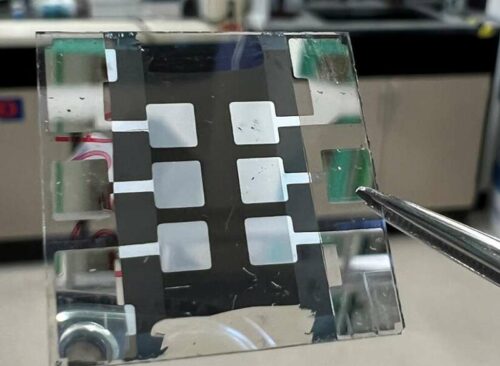Researchers implemented inverse perovskite architecture to develop highly stable and efficient perovskite solar cells

Researchers at the U.S. Department of Energy’s (DOE’s) National Renewable Energy Laboratory (NREL) in collaboration with scientists from the University of Toledo, the University of Colorado-Boulder, and the University of California-San Diego emerged with an idea of using inverse perovskite architecture to produce perovskite solar cells that can efficiently capture sunlight and convert it into electricity with enormous stability. This novel architectural structure assists researchers to obtain stabilized efficiency of 24% under 1-sun illumination, which has not been recorded to date. The highly efficient cell also retained 87% of its original efficiency after 2,400 hours of operation at 55-degree celsius.
“Some people can demonstrate perovskites with high stability, but efficiency is lower,” said Zhu, a senior scientist in the Chemistry and Nanoscience Center at NREL. “You ought to have high efficiency and high stability simultaneously. That’s challenging.”
Perovskite exhibits crystalline structure, it has been introduced in the last decade due to its magnificent attribute of efficiently capturing sunlight and converting it into electricity. Researchers implemented an inverted perovskite architecture instead of normal architecture, the difference between the two types is displayed in the process of how the layers are deposited on the glass substrate. The NREL-led team also included a new molecule, 3-(Aminomethyl) pyridine (3-APy), on the perovskite’s surface. The molecule reacts with formamidinium within perovskite to produce an electric field on the surface of the perovskite layer. This improves the performance of inverted cells and provides a greater level of efficiency and operational reliability.
“That suddenly gave us a huge boost of both efficiency and stability,” Zhu said. The scientists reported that 3-APy reactive surface engineering can enhance the efficiency of the inverted cell by more than 25% and not less than 23%.
Click here for the Published Research Paper






